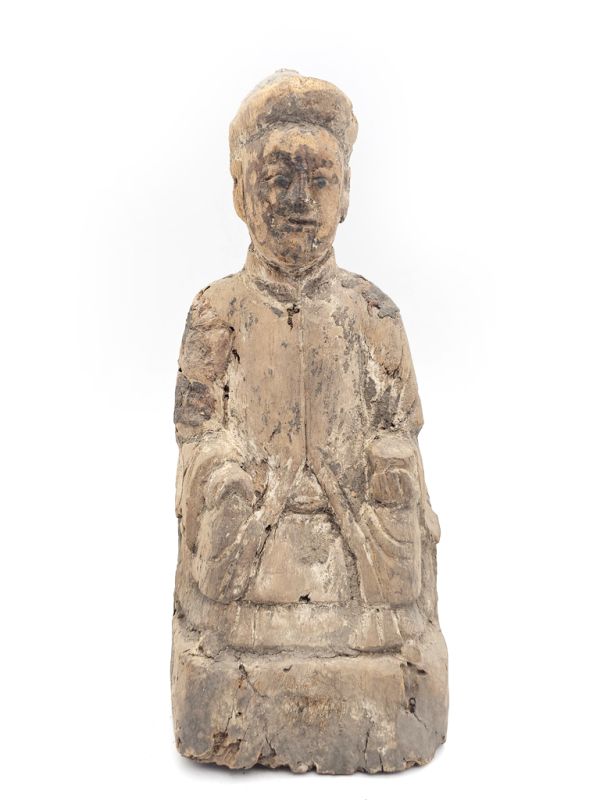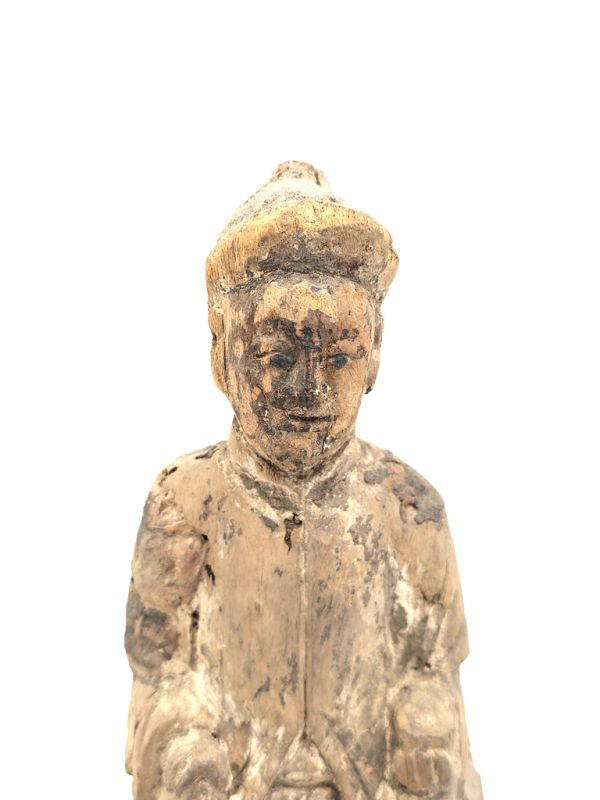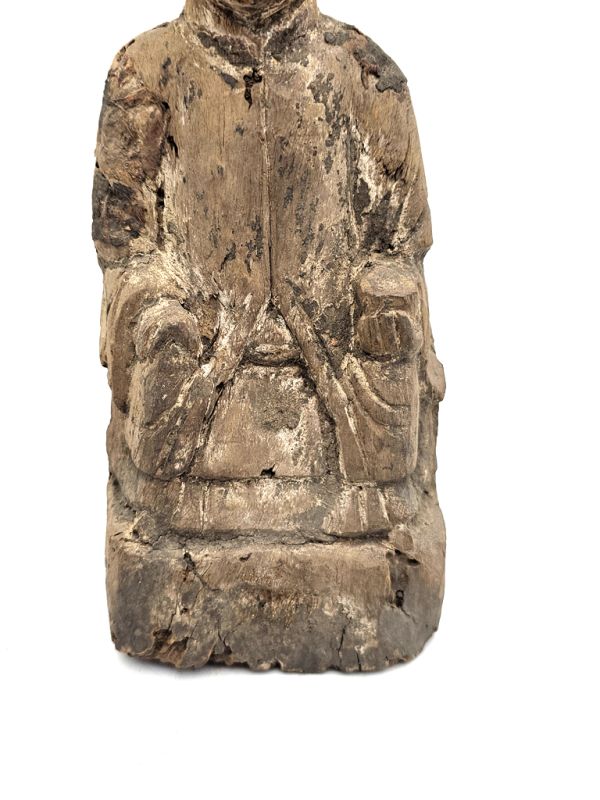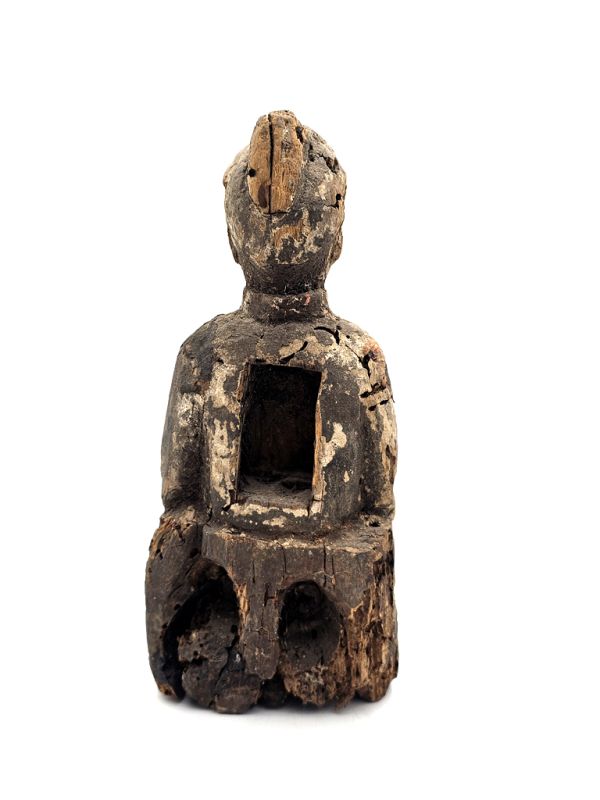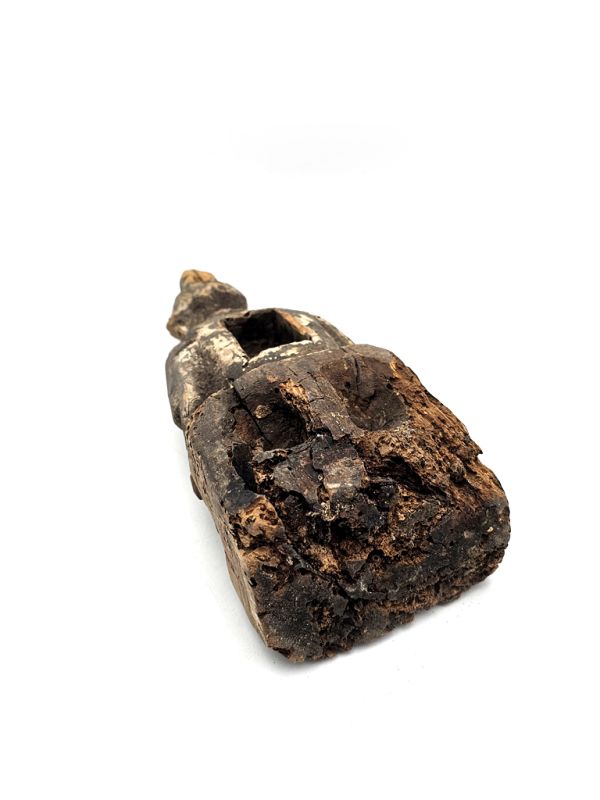Sacred Chinese Art - Venerable Woman in Painted Wood
Painted Wooden Votive Statuette - China - Qing Dynasty
-Chinese wooden votive statues from the Qing dynasty (1644-1912) represent an important facet of the religious and cultural art of this period. These statues, dedicated to Buddhist, Taoist deities or ancestors, were used to express devotion, to seek blessings or to commemorate important events.The Chinese have a strong worship of their ancestors, this worship is a very important aspect of Chinese culture. It is based on a mixture of the teachings of the three great “religions” (Confucianism, Taoism, Buddhism) where gods, deities, spirits or legendary heroes are mixed.
- This is why in most homes today we still find a space reserved for ancestors on the family altar.In the Qing era, it was common for families to have portraits of the eldest people in the family painted or carved. This small votive statuette was intended for a domestic altar; it represents an ancestor in a seated position. He is dressed in a dress with a wide collar and loose sleeves.The facial features are delicate, the drape of the dress very well rendered.
- A unique detail of these wooden statues is the presence of a hole in the back. Families used this space to insert a paper containing their family tree. This process involved writing the names and dates of birth and death of family members on parchment or special paper, then rolling it carefully before inserting it into the hole. This ritual was intended to ensure the protection and blessings of ancestors for future generations, while preserving family history. The faces of the deities are often serene and benevolent, symbolizing peace and protection, while the postures and iconographic attributes strictly respect religious canons. These works of art, commissioned by emperors, nobles or monasteries, still play a crucial role today in the study of Chinese spirituality and culture of that era.Only the wealthy elites owned finely crafted statuettes, made by specialized cabinetmakers, true artists for some.
- Discover this magnificent wooden votive statuette with traces of polychromy, dating from the Qing dynasty and coming from China. This is an old statue and not a reproduction. Mid-19th / Early 20th century (end of the Qing dynasty).Please note that this statuette has some wear and tear, evidence of its age and use over the centuries. These imperfections do not detract from its charm and authenticity, but rather add to its character and unique history. Add this exceptional piece to your collection and own a piece of Chinese religious art history.











